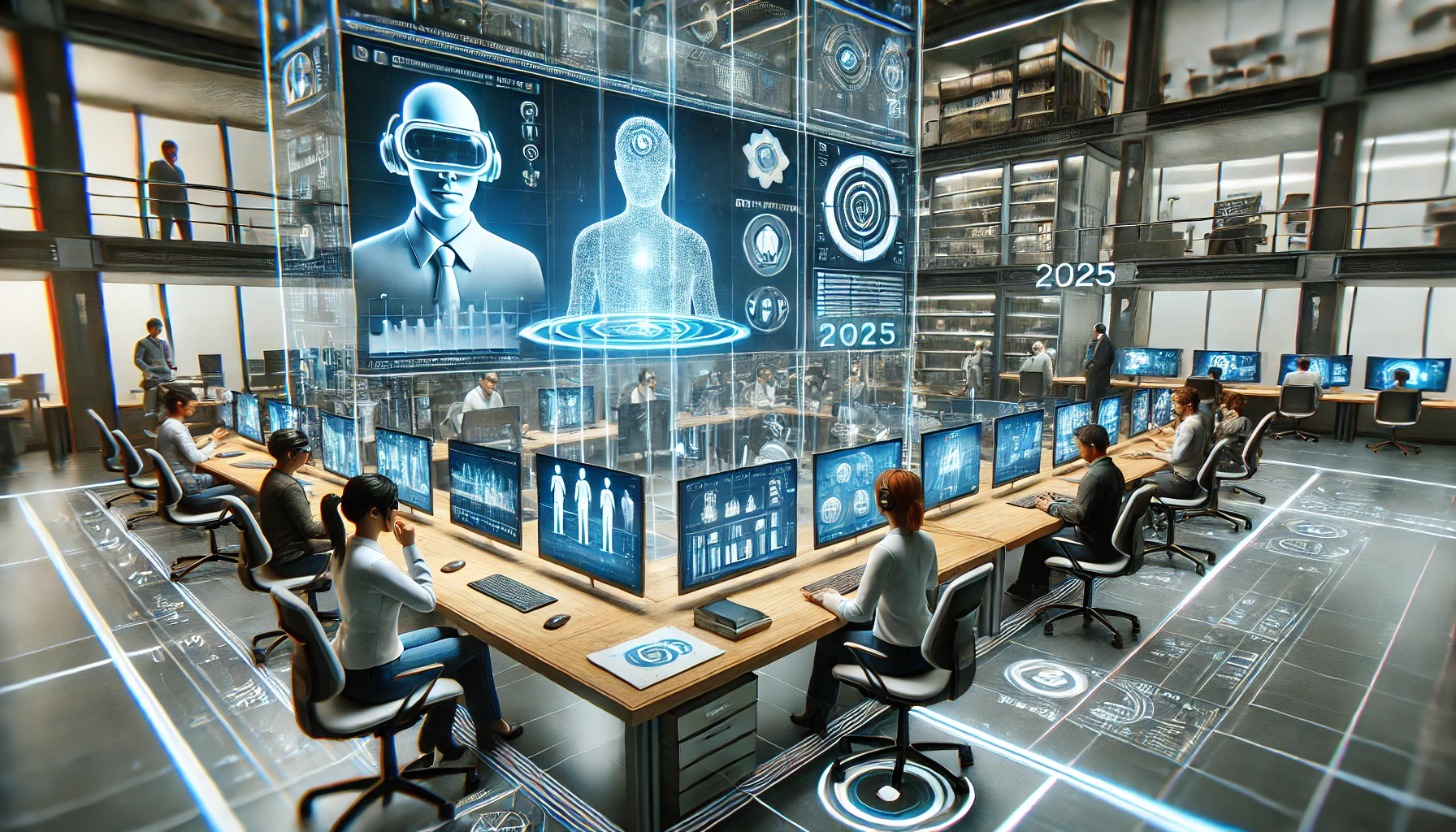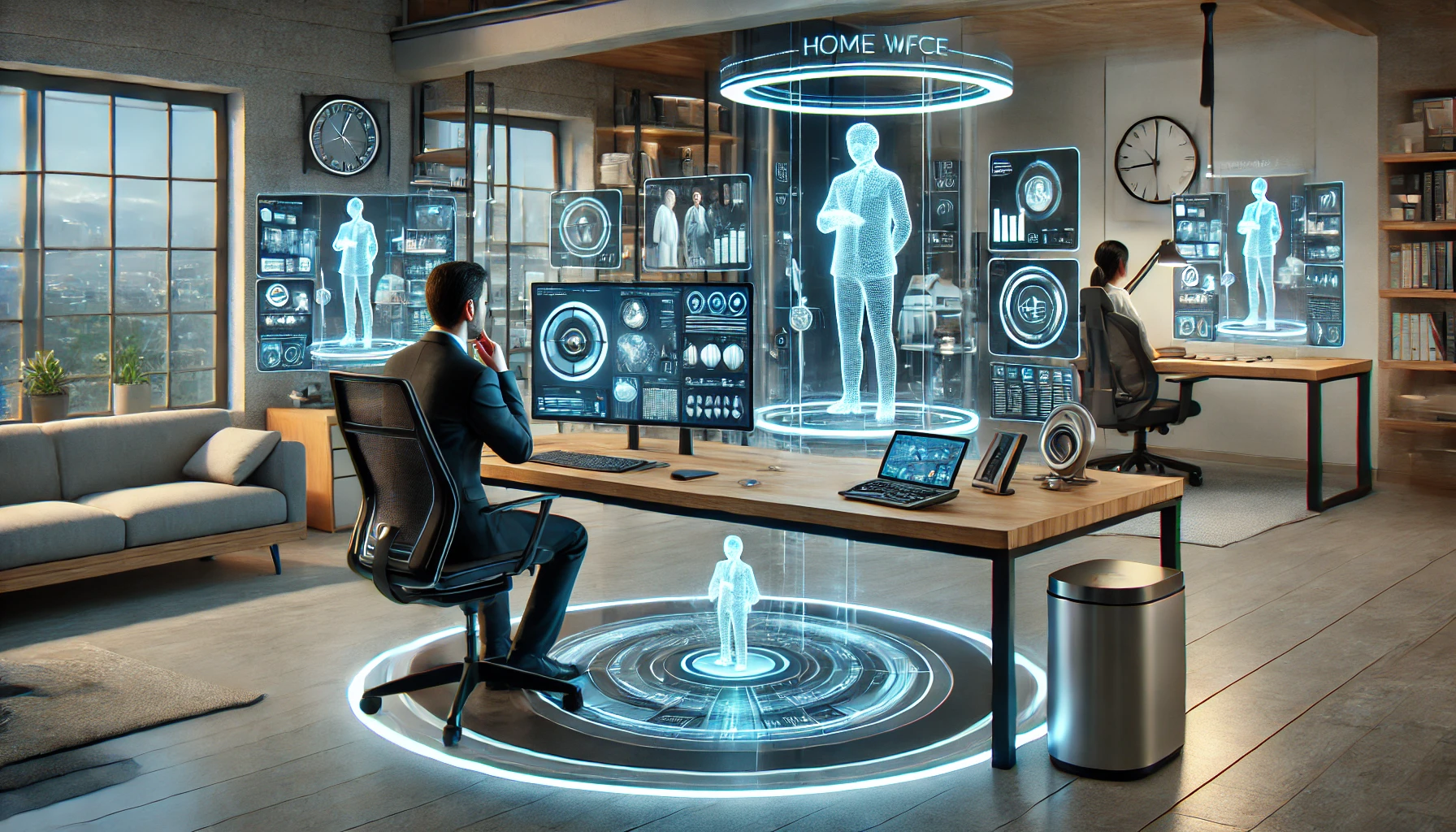As we move deeper into 2025, remote work has evolved from a pandemic necessity to a strategic business imperative. The landscape of virtual collaboration, digital productivity, and distributed teams continues to transform through groundbreaking innovations that are reshaping how we think about work itself. These remote work innovations aren’t just enhancing existing processes—they’re completely redefining workplace dynamics, opening new possibilities for global talent acquisition, and creating more flexible, efficient work environments.
The Evolution of Remote Work
From Crisis Response to Strategic Advantage
Remote work’s journey from emergency measure to strategic advantage has been remarkable. What began as a reluctant adaptation to global circumstances has matured into a deliberate approach embraced by forward-thinking organizations worldwide.
Prior to 2020, remote work was often viewed as a perk limited to certain industries or roles. Today, it’s become an expectation for knowledge workers across virtually all sectors. According to recent data, approximately 28% of employees worldwide now work remotely, with that number rising to nearly 35 million people (22.8% of the workforce) in the United States alone.
This evolution wasn’t merely about changing work locations—it represented a fundamental shift in how we conceptualize productivity, collaboration, and workplace culture. Organizations that initially questioned whether remote work could maintain productivity now leverage it as a competitive advantage, accessing global talent pools and reducing operational costs while improving employee satisfaction.
The Productivity Question Answered
One of the most significant developments in remote work’s evolution has been the definitive answer to the productivity question. Contrary to early skepticism, remote work has consistently demonstrated productivity benefits across numerous studies and real-world implementations.
Research led by prominent economists has shown productivity improvements averaging 13-15% among remote workers, attributable to reduced commute times, fewer workplace distractions, and more comfortable work environments. These findings have helped solidify remote work as not just a viable option but often a preferable one from a performance perspective.
The focus has shifted from whether remote work is productive to how to optimize remote environments for maximum effectiveness—a question that today’s innovations are specifically designed to address.
Current State in 2025
As we assess the remote work landscape in early 2025, several key characteristics define its current state:
- Hybrid models that blend remote and in-office work have become standard for most knowledge-work organizations
- Technology has evolved beyond simple communication tools to comprehensive digital work environments
- Organizations increasingly view remote capabilities as essential infrastructure rather than temporary accommodations
- Employee expectations have permanently shifted, with workplace flexibility now considered a basic requirement
- Global talent acquisition has normalized, with geography no longer a primary limiting factor in hiring decisions
- Businesses have developed sophisticated approaches to balance remote work benefits with meaningful in-person collaboration
This evolution sets the stage for the remarkable innovations reshaping remote work in 2025. Let’s explore these innovations in detail.
Hybrid Work Models

The New Standard
Hybrid work has emerged as the dominant model in 2025, offering a balance between remote flexibility and in-person collaboration. Unlike the rigid schedules of previous years, today’s hybrid models employ sophisticated approaches to determine when, where, and how work happens.
Organizations have moved beyond simple alternating schedules to implement dynamic hybrid models that adapt to specific team needs, project requirements, and individual preferences. These models recognize that different types of work benefit from different environments and create frameworks that optimize each.
AI-Powered Hybrid Scheduling
Among the most significant innovations in hybrid work are AI-driven scheduling systems that optimize when teams should be physically together. These intelligent platforms analyze:
- Project timelines and dependencies
- Collaboration patterns across teams
- Individual productivity data and preferences
- Office capacity and resource availability
- Travel considerations and environmental impacts
Based on these factors, these systems automatically recommend optimal in-office days that maximize collaborative potential while minimizing unnecessary commutes. The result is purposeful office usage where in-person time delivers genuine value through meaningful interaction.
Space Utilization Technologies
Physical workspaces have been reimagined to support hybrid work effectively. Smart office technologies now track space utilization in real-time, allowing employees to book appropriate spaces for their in-office days.
Innovations like occupancy sensors and environmental monitoring systems help organizations make data-driven decisions about their physical workspaces. These technologies ensure that when employees do come to the office, the environment supports their specific needs—whether for focused work, collaboration, or social connection.
Global Hybrid Coordination
For multinational organizations, coordinating hybrid work across global teams presents unique challenges. New platforms specifically address this complexity by synchronizing in-office schedules across different locations, time zones, and teams.
These systems create “collaboration windows” where distributed teams can interact effectively, whether physically or virtually. They also help prevent isolation by ensuring remote employees regularly connect with colleagues regardless of location.
Advanced Collaboration Technologies
Beyond Video Conferencing
Collaboration technologies have progressed dramatically beyond basic video conferencing to create more immersive, effective remote work experiences. These innovations address the nuanced needs of distributed teams, creating environments where distance becomes increasingly irrelevant.
Immersive Virtual Meeting Spaces
Virtual meeting technologies have evolved to create truly immersive experiences that more closely replicate in-person interaction. These platforms offer three-dimensional environments where participants can:
- Move freely through virtual spaces
- Interact with digital objects and information naturally
- Experience spatial audio that mimics real-world sound propagation
- Utilize natural body language and gestures for communication
- Collaborate on digital artifacts in a shared virtual context
Platforms like Spatial and similar tools now provide meeting experiences where teams can collaborate in shared virtual spaces with a genuine sense of presence. These environments are particularly valuable for design reviews, complex problem-solving sessions, and creative collaboration.
Real-Time Translation and Transcription
International collaboration has been transformed by integrated translation and transcription capabilities. These features provide:
- Near-instantaneous translation across dozens of languages
- Preservation of nuance and context in translated communication
- Automatic meeting transcription with speaker identification
- AI-generated summaries and action item extraction
- Searchable archives of discussions and decisions
These capabilities have dramatically reduced communication barriers for global teams, creating more inclusive environments where language differences no longer impede collaboration.
Context-Preserving Asynchronous Collaboration
Innovative asynchronous collaboration tools now maintain critical context across time zones and work schedules. These platforms capture the evolution of ideas, preserve decision rationales, and create persistent spaces where team members can contribute whenever they’re working.
By maintaining this continuity, these tools minimize the disjointed feeling previously associated with asynchronous work. Team members can easily understand what happened while they were away and seamlessly continue collaborative processes across different time zones and work schedules.
AI and Automation in Remote Work
The Intelligent Workplace
Artificial intelligence and automation have become central to remote work effectiveness in 2025. These technologies handle routine tasks, enhance human capabilities, and create more intuitive remote experiences across virtually all aspects of distributed work.
AI-Powered Virtual Assistants
Advanced AI assistants have evolved into indispensable team members for remote workers. These intelligent systems:
- Prepare context-rich meeting briefs based on previous discussions and relevant documents
- Generate first drafts of routine communications and documentation
- Identify and suggest action items from conversations and communications
- Manage follow-ups and coordinate across team members
- Automate scheduling across time zones and personal preferences
Personal AI assistants learn individual work patterns and priorities, automatically managing digital environments to support peak productivity and reduce administrative burden. This capability allows remote workers to focus on high-value activities that require human creativity and judgment.
Workflow Automation for Remote Teams
Automation has matured to support end-to-end workflow management for distributed teams. These systems:
- Automatically route tasks based on availability, expertise, and workload
- Update project statuses and notify relevant stakeholders of changes
- Generate documentation and maintain knowledge bases
- Coordinate handoffs across time zones and team boundaries
- Identify process bottlenecks and suggest improvements
By handling routine coordination and administrative tasks, these automation platforms reduce the overhead traditionally associated with remote work and create more efficient distributed operations.
AI-Enhanced Meeting Experiences
Meetings have been transformed by AI technologies that make them more productive and accessible for remote participants. These innovations include:
- Real-time generation of meeting notes and summaries
- Automatic capture and organization of decisions and action items
- Background noise suppression and voice enhancement
- Speaker identification and attribution of comments
- Participation analysis to ensure inclusive discussions
These capabilities ensure remote participants can fully engage in meetings without being disadvantaged by their physical location, creating more equitable hybrid experiences.
Immersive Technologies for Remote Presence

Virtual Reality and Augmented Reality
Virtual Reality (VR) and Augmented Reality (AR) have evolved from experimental technologies to practical tools for specific remote collaboration scenarios in 2025.
VR Collaborative Environments
VR collaboration tools now provide immersive workspaces where remote teams can interact with a sense of physical presence. These environments support:
- Natural movement and interaction with virtual objects
- Spatial arrangement of information and work artifacts
- Body language and non-verbal communication
- 3D visualization and manipulation of complex concepts
- Persistent workspaces that remain in place between sessions
These capabilities make VR particularly valuable for design teams, architects, engineers, and other visually-oriented professionals who benefit from spatial understanding and manipulation. Tools like Connec2 and Immersed allow these teams to collaborate in shared environments that transcend the limitations of screen-based interaction.
AR Remote Assistance
Augmented Reality has revolutionized remote technical support and collaboration on physical tasks. Using AR headsets or smartphone applications, field workers can receive visual guidance overlaid directly on their physical environment from remote experts.
This capability has transformed industries like manufacturing, healthcare, and field service by allowing organizations to leverage expertise instantly across locations. Specialists can now guide hands-on work regardless of geographic separation, reducing travel requirements while improving resolution times.
Mixed Reality Workspaces
The emerging category of mixed reality workspaces blends physical and digital elements to create more natural remote work environments. These systems allow users to:
- Arrange virtual monitors and workspaces around their physical environment
- Interact with both physical and digital objects seamlessly
- Bring remote colleagues into their physical space as digital presences
- Access digital information contextually based on physical location and activities
- Create persistent spatial organizations of work that mirror natural environment use
These capabilities help remote workers escape the constraints of traditional screen-based interfaces, creating more intuitive and comfortable work arrangements.
Cybersecurity Innovations for Remote Work
Protecting the Distributed Workplace
As remote work has become standard, cybersecurity approaches have evolved dramatically to address the unique challenges of protecting distributed workforces and sensitive information.
Zero Trust Architecture
Zero Trust security models have become the foundation for remote work security in 2025. These frameworks operate on the principle of “never trust, always verify,” authenticating and authorizing every access request regardless of origin.
Modern implementations have become remarkably user-friendly while maintaining rigorous security. Continuous authentication happens invisibly in the background, using behavioral biometrics, device health monitoring, and contextual analysis to verify identity without disrupting workflow.
Secure Access Solutions
Dedicated secure access technologies have emerged as essential components of remote work infrastructure. These solutions provide:
- Secure connections that protect sensitive data in transit
- Contextual access controls based on user behavior and risk assessment
- Isolated environments for handling highly confidential information
- Segmentation between work and personal digital activities
- Cross-device consistency in security posture
These capabilities ensure remote workers can access necessary resources securely from any location while protecting organizational data from increasingly sophisticated threats.
AI-Driven Security Monitoring
Artificial intelligence now plays a central role in monitoring remote work environments for security threats. These systems:
- Continuously analyze user behavior for anomalies that might indicate compromise
- Detect and respond to potential data exfiltration attempts
- Identify vulnerabilities in remote work setups
- Provide contextual security guidance to remote workers
- Automatically remediate common security issues
By combining sophisticated threat detection with proactive protection, these systems maintain robust security while allowing the flexibility remote work requires.
Global Workforce Enablement
Borderless Talent Strategies
The globalization of remote work has driven innovations in managing teams across different countries, time zones, and regulatory environments, creating truly borderless organizations.
Global Compliance Automation
Managing compliance across multiple jurisdictions has been streamlined through automated systems that navigate the complexity of international employment. These platforms:
- Track changing regulations across different regions
- Generate compliant contracts and documentation based on worker location
- Manage tax withholding and reporting requirements
- Ensure adherence to local labor laws and employment regulations
- Facilitate compliant international payments and benefits
These capabilities have dramatically reduced the administrative barriers to global hiring, allowing organizations to access talent regardless of location.
Cross-Cultural Collaboration Tools
Specialized collaboration platforms now incorporate cultural intelligence to help remote teams navigate different communication styles and work practices. These tools provide:
- Guidance on appropriate communication approaches based on cultural context
- Translation that preserves cultural nuance and intent
- Awareness of regional holidays and work customs
- Scheduling that respects different regional norms around availability
- Training in cross-cultural communication and collaboration
By addressing the cultural aspects of global collaboration, these tools help distributed teams work together more effectively despite different backgrounds and expectations.
Global Talent Platforms
Sophisticated talent marketplaces have emerged that connect organizations with remote workers globally while handling compliance, payment, and management. These platforms provide:
- Verified skills assessment and qualification validation
- Compliance management across different jurisdictions
- Standardized contracting and payment processing
- Performance tracking and reputation systems
- Integration with organizational workflows and systems
These capabilities make global talent acquisition accessible even to smaller organizations that lack dedicated international HR resources.
Wellness and Productivity Innovations
Nurturing Remote Workers
Remote work innovations now address both productivity and wellbeing, recognizing that these factors are deeply interconnected in distributed environments.
Digital Wellbeing Assistants
Digital wellbeing solutions help remote workers maintain healthy work patterns and prevent burnout. These systems:
- Monitor work hours and break frequency
- Track physical activity and sedentary time
- Provide personalized recommendations for maintaining wellbeing
- Offer guided breaks and mindfulness exercises
- Help establish and maintain boundaries between work and personal time
By helping workers maintain balance, these tools support sustainable remote work practices that prevent burnout and promote long-term productivity.
Focus Enhancement Technologies
Advanced productivity tools now help remote workers achieve and maintain flow states—periods of deep, uninterrupted concentration. These systems:
- Create distraction-free work environments by managing notifications
- Suggest optimal times for different types of work based on personal patterns
- Provide ambient sound environments that enhance concentration
- Guide time management using techniques like the Pomodoro method
- Integrate with smart home systems to optimize physical environments
These capabilities help remote workers overcome the potential distractions of home environments and achieve consistent productivity.
Remote Team Cohesion Platforms
Innovative platforms now address the social and cultural aspects of remote work, helping distributed teams build meaningful connections despite physical separation. These tools:
- Facilitate virtual social interactions and team-building activities
- Create opportunities for serendipitous connections among team members
- Celebrate achievements and milestones across distributed teams
- Support mentorship and knowledge sharing in remote contexts
- Maintain cultural continuity across physical and virtual environments
By nurturing these connections, these platforms help remote teams develop the trust and rapport that underpin effective collaboration.
Implementing Remote Work Innovations
Strategic Adoption Approaches
Successfully implementing remote work innovations requires a strategic approach that addresses technology, people, and processes comprehensively.
Assessment and Strategy Development
Before implementing remote work innovations, organizations should conduct a thorough assessment of their specific needs and current capabilities. This assessment should evaluate:
- Work types and their suitability for remote execution
- Existing technology infrastructure and capability gaps
- Employee preferences and requirements
- Organizational culture and leadership readiness
- Security and compliance requirements
Based on this assessment, organizations can develop tailored remote work strategies that address their unique contexts and objectives.
Technology Integration
Selecting and integrating appropriate remote work technologies should focus on creating cohesive ecosystems rather than accumulating disconnected point solutions. Key considerations include:
- Integration capabilities with existing systems
- User experience across different devices and environments
- Security features and compliance capabilities
- Scalability to support growing implementation
- Total cost of ownership, including implementation and support
Organizations should prioritize solutions that work together seamlessly to create consistent remote experiences rather than forcing employees to navigate disconnected tools.
Change Management and Adoption
Technology implementation is only effective when accompanied by comprehensive change management support. Successful approaches include:
- Clear communication about the purpose and benefits of new technologies
- Role-specific training focused on practical application
- Peer champions who model effective use and support colleagues
- Progressive implementation that prevents overwhelming users
- Regular feedback mechanisms to identify improvement opportunities
Organizations that invest equally in technology and adoption support typically achieve significantly higher returns on their remote work investments.
Continuous Optimization
Remote work implementation should be viewed as an ongoing journey rather than a destination. Establishing clear success metrics enables continuous improvement:
- Productivity indicators focused on outcomes rather than activities
- Employee experience measures that assess satisfaction and wellbeing
- Technology utilization data that identifies adoption levels
- Security and compliance metrics specific to remote environments
- Business impact measures such as talent retention and cost savings
Regular assessment against these metrics allows organizations to refine their remote work approaches and maximize the value of their investments.
The Future of Remote Work Innovations
Emerging Trends
As we look beyond current implementations toward future developments, several emerging technologies and approaches are poised to further transform remote work experiences.
Ambient Computing for Remote Work
The evolution of ambient computing—technology that fades into the background until needed—promises to create more natural remote work experiences. These systems will:
- Anticipate needs based on context and past patterns
- Adapt environments automatically to support current activities
- Provide information and assistance without explicit requests
- Create seamless transitions between different work modes
- Reduce technology friction in remote collaboration
As these capabilities mature, technology will become increasingly invisible while still providing powerful support for remote work activities.
Neural Interfaces and Direct Communication
Early-stage neural interface technologies are beginning to enable more direct interaction with digital systems. While currently limited, these technologies may eventually:
- Allow more intuitive control of digital environments
- Enable faster, more natural information access
- Support new forms of team awareness and connection
- Reduce interface barriers in remote collaboration
- Create entirely new modes of remote presence
Though widespread implementation remains years away, these technologies represent the frontier of remote work innovation.
Autonomous Digital Colleagues
AI systems are evolving from tools to active collaborators in remote teams. These autonomous digital colleagues will:
- Actively contribute ideas and solutions to team challenges
- Represent absent team members in discussions and decisions
- Manage coordination across distributed teams automatically
- Facilitate knowledge transfer and continuity
- Adapt their behavior to complement human team members
This evolution will fundamentally change team dynamics in remote environments, creating new collaboration models that blend human and artificial intelligence.
Conclusion
Remote work innovations have transformed the workplace in 2025, creating new possibilities for flexibility, productivity, and global collaboration. From hybrid models and immersive virtual environments to AI-powered productivity tools and sophisticated global workforce solutions, these innovations have fundamentally changed how we think about work itself.
Organizations that successfully implement remote work innovations are experiencing significant benefits: enhanced productivity, access to global talent, cost optimization, improved sustainability, and greater employee satisfaction. However, realizing these benefits requires thoughtful implementation that addresses both technological capabilities and human factors.
As remote work continues to evolve, organizations must approach it as a strategic priority rather than a tactical accommodation. Those that invest in continuous innovation and adaptation will be best positioned to thrive in the evolving landscape of distributed work.
By combining the right technologies with appropriate policies, training, and cultural adaptations, organizations can create remote work experiences that benefit both businesses and employees, establishing sustainable models for the future of work. Remote work innovations aren’t just changing where we work—they’re transforming how we collaborate, create, and contribute in an increasingly connected world.
Read more at worldsinsight.











